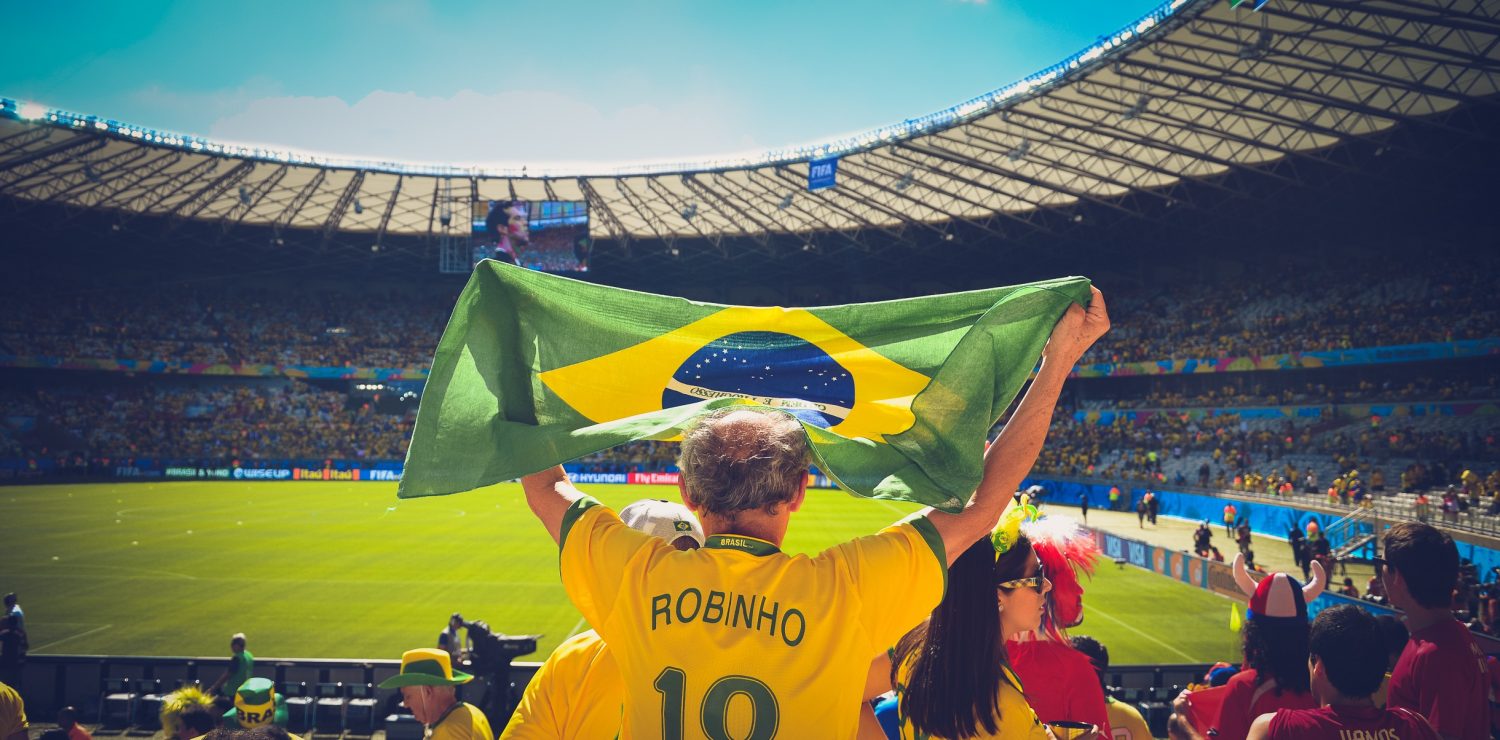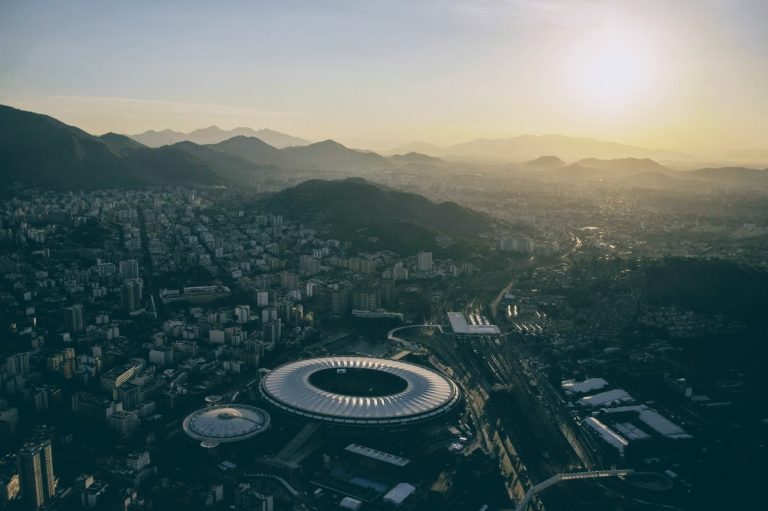The Maracanã – A national monument in Brazil
When the Renault-Sport Formula 1 team asked its young star driver Alain Prost what he would like to do in Rio de Janeiro in the early 1980s, apart from winning the Brazilian Grand Prix, his answer was clear and quick: attend a football match at the legendary Maracanã stadium. For the dedicated football fan that Prost was, experiencing this sacred temple was the most beautiful gift imaginable. To enter the Maracanã is to enter the history of Brazilian football and the incredible fervor that accompanies it.

Maracana, the legendary Brazilian football stadium of the 1950`s
Imagine being up there in the stands of the Maracana stadium, so high that the only way to distinguish the tiny players more than 120 meters down on the pitch is by the color of their jerseys! You can hear nothing but the infernal sound of “batucadas” scattered throughout the stands, and the portable radios brought by the supporters all around you because at this altitude, they are the only way to follow the course of the match! The match is important, but the atmosphere is even more important: it is essential to be there. You come with family, friends, anyone – it’s a party: you shout, dance and sing!
This was what awaited the lucky tourist in the Maracana stadium from the fifties until the nineties. This was a glorious time when the stadium officially had more than 180 000 seats, 220 000 if you take into account the standing spectators!
Hampden Park in Glasgow and its record of 150,000 seats was no match. Things have changed since the glory days with refurbishments and financial difficulties, but the fervor of the “carioca” fans remains intact.
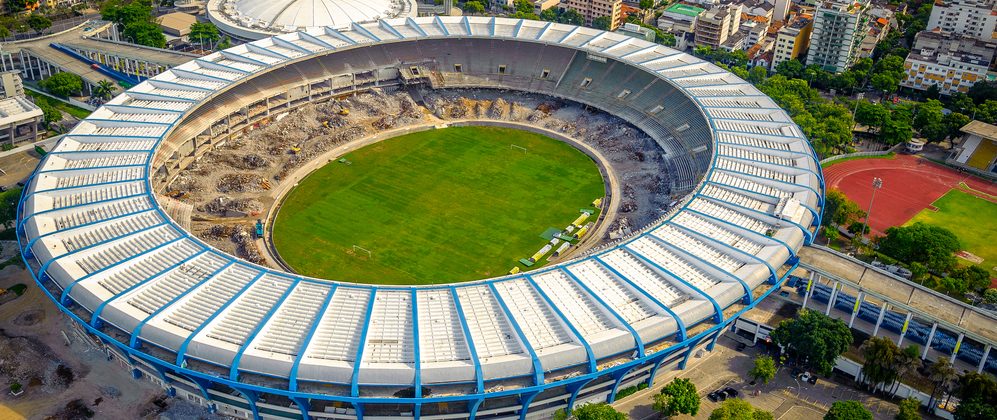
Maracanã: From Conception to Construction
The Maracanã stadium has long been one of the largest in the world, fitting for a country where “futebol” is a religion. Before 1950, Brazil lacked a sports ground of international renown. The announcement that Brazil would host the 1950 World Cup prompted the construction of this historical site. In 1947, Jules Rimet, president of FIFA and co-founder of the World Cup, informed Brazil of its privilege to host the 1950 edition, the first after World War II. This decision necessitated building a stadium befitting the event.
Rio de Janeiro was the obvious choice for the stadium’s location. Within Rio, two sites were considered: one in the district of Tijuca, advocated by Rio’s federal district mayor Ângelo Mendes de Moraes, and the other in Jacarepaguá, a lagoon-side area preferred by the Ministry of Sports. Sports journalist Mário Filho was a strong proponent of the Maracanã site. Through his enthusiastic articles, Filho rallied various stakeholders to support the Maracanã (Tijuca) location, which was more centrally situated than Jacarepaguá. The site selection was finalized in 1947, and the first stone was laid in January 1948.
Construction began in earnest in August 1948. The deadline was tight, and 1,700 workers toiled tirelessly to complete the building. By the end of 1949, it was nearly finished, though the stadium would not be fully completed until 1965. The Maracanã hosted the first match of the 1950 World Cup, Brazil vs. Mexico (which Brazil won 4-0), and the final of the 2014 edition, where Germany defeated Argentina. Between these epochs, many legends were born, and record-breaking matches were played.
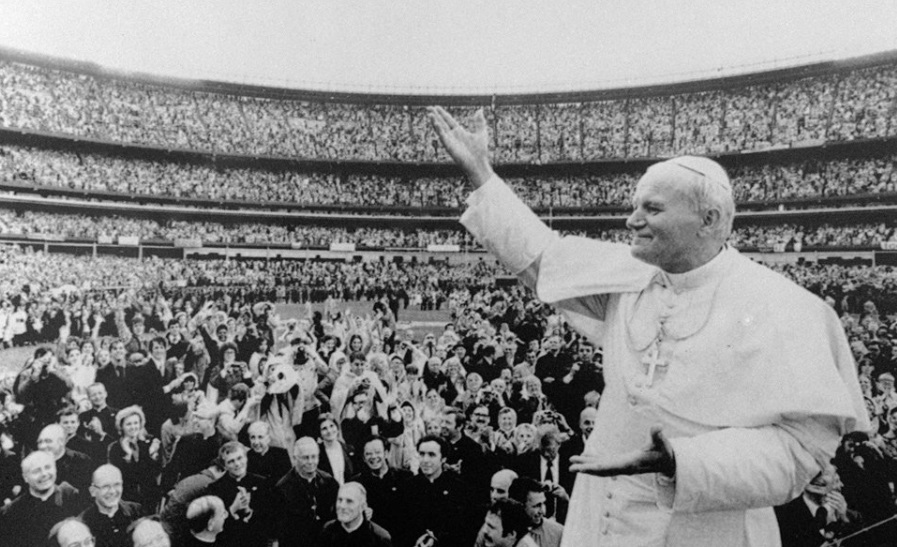
Pelé, A-Ha, and Pope John Paul II: Icons of the Maracanã Stadium
The Maracanã was the largest stadium in the world when it was built. Designed by a team of architects who wanted to anchor their creation in modernism and gigantism, the stadium was as high as a six-story building, initially offering more than 150,000 seats. This capacity quickly increased to 180,000, plus a standing area, a press room with twenty transmission booths, thirty-two toilets and as many bars, and six cloakrooms, including one for arbitration.
The Maracanã was immediately perceived as an ambitious achievement, showcasing Brazil’s architectural prowess on the global stage. The stadium has hosted many national teams, primarily the Rio clubs, but paradoxically, no club or team was resident in Maracanã, neither Fluminense nor Flamengo. This did not prevent intense clashes, especially during the Carioca Championships where Flamengo became the first triple champion in 1953, 54, and 55, all matches played at Maracanã. While the Brazil national team did not win either of the two World Cups hosted in the country (1950 and 2014), the greatest players lived their hours of glory there. Pelé scored the thousandth goal of his illustrious career in 1969 and bid farewell in 1971. In 1983, the remains of the idol Garrincha gathered tens of thousands of people in the consecrated enclosure. In terms of records, the Maracanã holds the record for the largest paying public for a football game, with 183,341 tickets sold in 1969. In 1993, the Norwegian group A-Ha set a Guinness World Record with 199,000 tickets sold for a single concert. Like all international stadiums, Maracanã has welcomed rock music fans and even hosted Pope John Paul II!
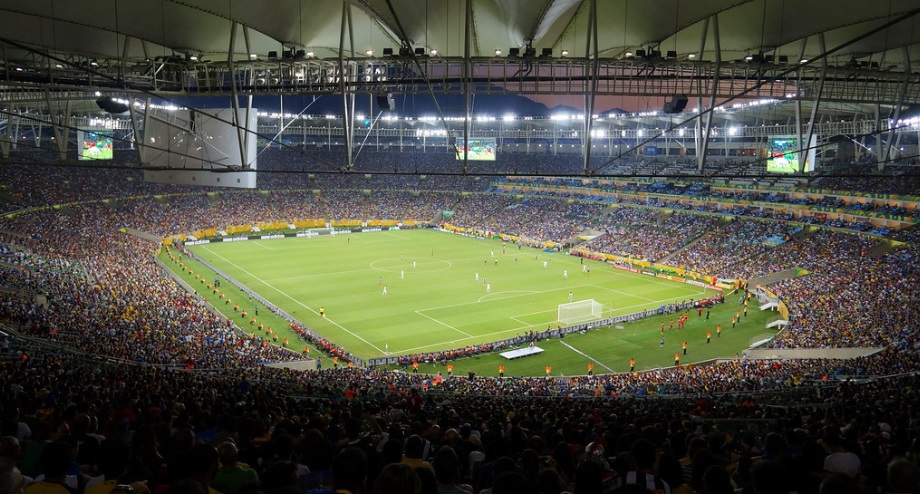
Refurbishment and Rebirth of the Maracanã Stadium
The Maracanã has been refurbished twice. In 1999, its capacity was reduced to 103,000 seats to host the World Cup clubs. In 2013, to comply with safety standards for the 2014 World Cup and the 2016 Olympic Games, the stadium’s seating was further reduced to 78,838. Following these games, the legendary stadium faced a period of neglect, falling victim to political and financial turmoil. The facilities were left open to the elements, becoming a target for looters and vandals. This abandonment saddened fans who remembered the stadium’s former glory. Fortunately, reason prevailed, and the stadium was restored. Today, the Maracanã once again hosts matches, potentially bringing future legends like Pelé, Zico, or Ronaldo to the field. Despite its transformations, the Maracanã remains a legendary place that any football fan visiting Rio de Janeiro must experience.
Practical Information for Visitors
For those planning a visit to the Maracanã, here are some essential details:
Opening Hours: Check the Maracanã’s official website for current visiting hours, as they may vary.
Tours: The Maracanã offers guided tours that take you through the history and the behind-the-scenes areas of the stadium. These tours often include access to the locker rooms, the players’ tunnel, and the pitch itself.
Tickets: Tickets for tours and matches can be purchased online or at the stadium’s ticket office. Prices vary depending on the event and the type of tour.
Events: Besides football matches, the Maracanã hosts various events, including concerts and other sporting events. Keep an eye on the schedule to catch a unique experience.
The Maracanã stadium is not just a venue; it’s a monument to the passion and history of Brazilian football. Its towering structure, historical significance, and the legends it has hosted make it a must-visit for any sports enthusiast. Whether you’re attending a football match, a concert, or taking a guided tour, the Maracanã offers an unforgettable experience that connects you to the heart of Brazilian culture. As Rio de Janeiro continues to evolve, the Maracanã stands as a testament to the city’s enduring love for football and its ability to bring people together. So, when you’re in Rio, make sure to step into this iconic stadium and be part of its legendary story.
